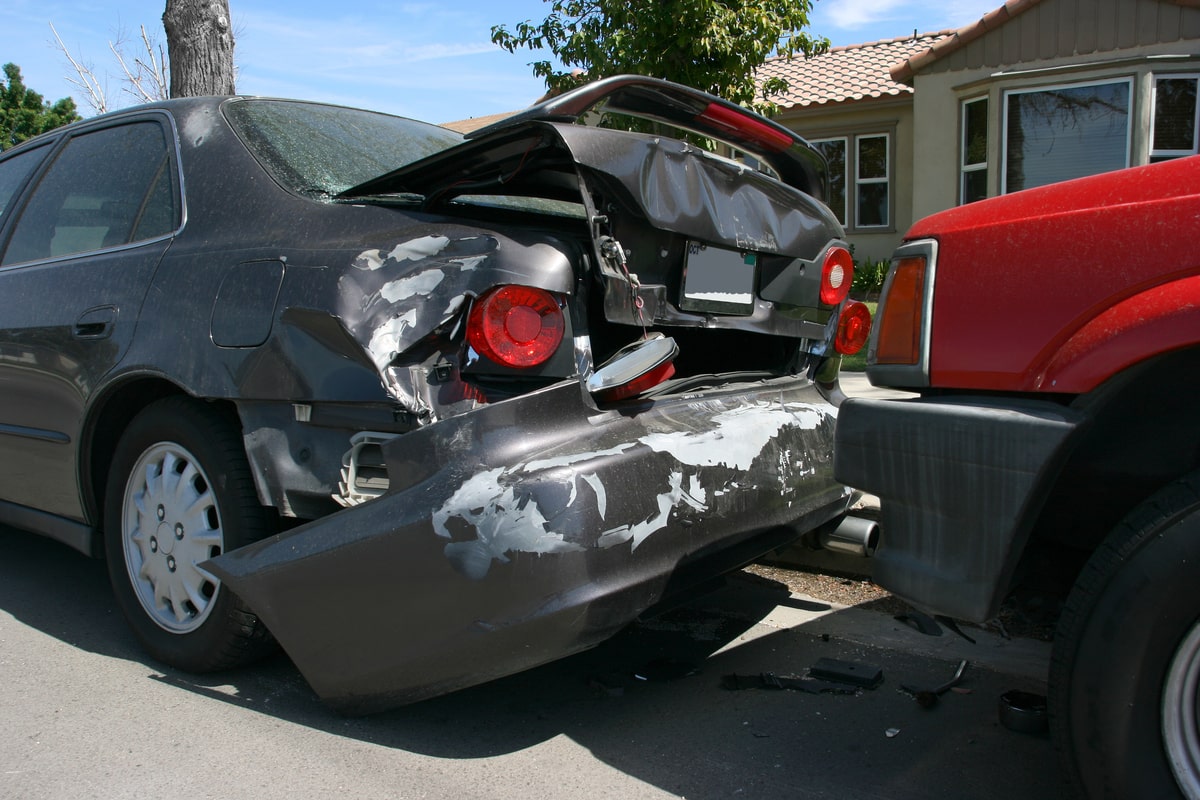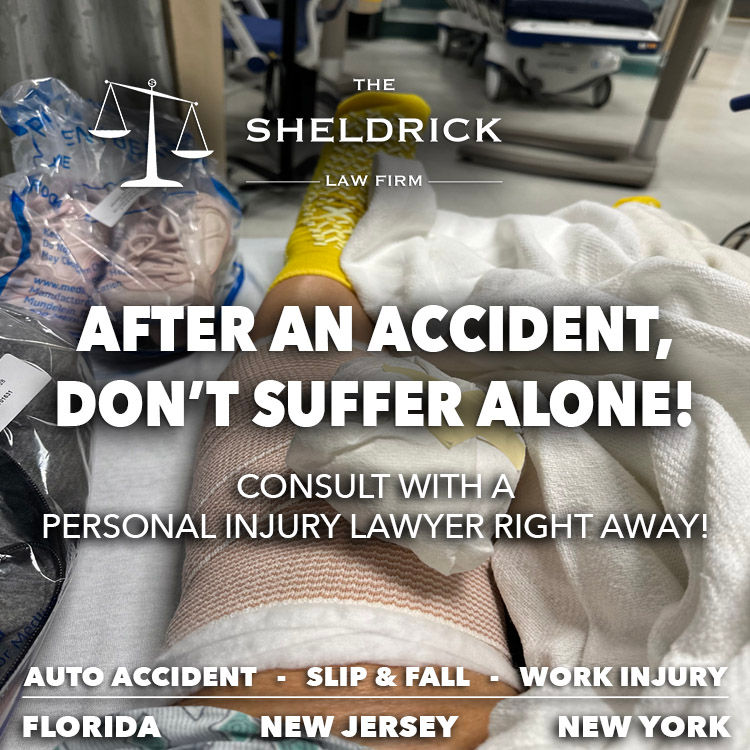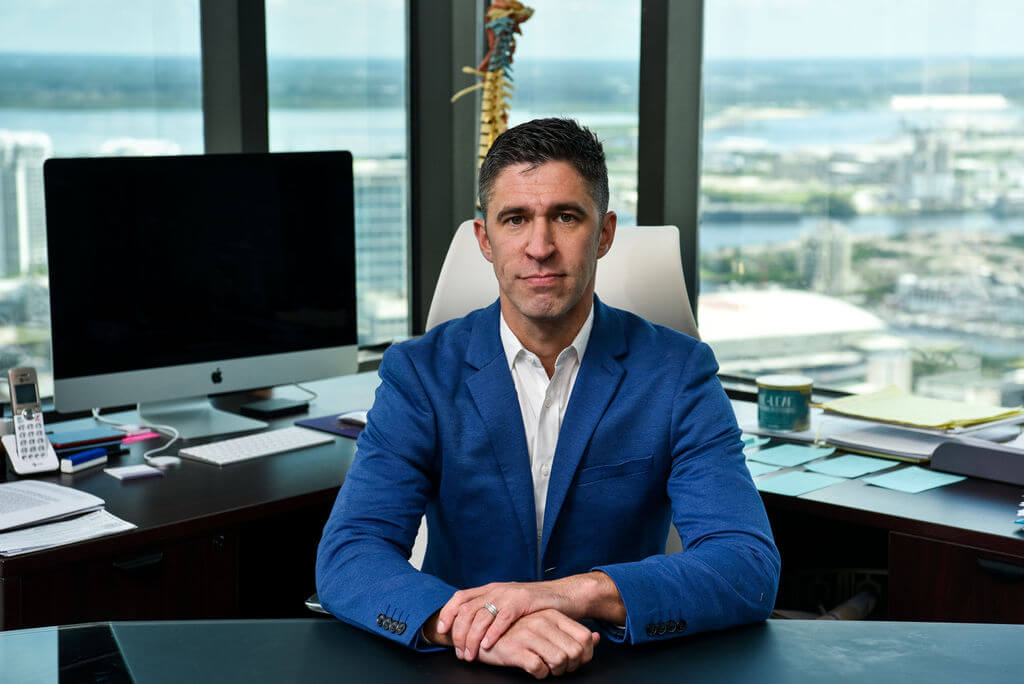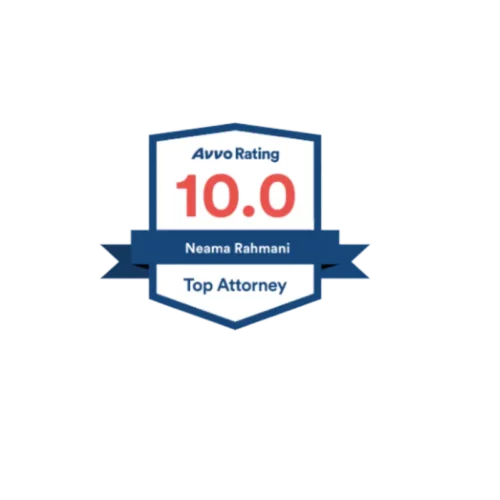Stay Calm and Call for Help
- Remain calm and composed after the accident.
- Call 911 immediately to report the accident and request medical assistance if necessary.
- If possible, move your vehicle to the side of the road to avoid further accidents.
Exchange Information
- Exchange information with the other driver(s) involved in the accident, including:
- Name, address, and phone number
- Driver’s license number
- Insurance information (if available)
- Make, model, and license plate number of the vehicles involved
Take Photos and Gather Evidence
- Take pictures of the accident scene, including:
- Damage to the vehicles
- Injuries sustained
- Road conditions and weather
- Obtain names and contact information of any witnesses.
Contact the Police
- In most states, you are required to file a police report for any car accident with significant damage or injuries.
- The police report will provide an official record of the incident.
File a Claim with the Other Driver’s Insurance Company
- If the other driver has insurance, file a claim with their insurance company.
- Provide them with all the necessary information and documentation you have gathered.
- If you are having trouble filing a claim, consider hiring an attorney.
Seek Medical Attention
- Even if you don’t feel any pain, it’s important to seek medical attention after a car accident.
- Some injuries may not be immediately apparent.
Protect Your Rights
- Do not admit fault for the accident.
- Be cautious about signing or agreeing to anything without first speaking to an attorney.
- Be prepared to provide a statement to the insurance company or police, but do not provide more information than necessary.
Contact Your State’s Motor Vehicle Department
- Inform your state’s Motor Vehicle Department about the accident, especially if you are uninsured.
- They may require you to file a financial responsibility form or post a bond.
Other Considerations
- Explore financial assistance options, such as Medicaid or medical payment coverage.
- Contact local community organizations that provide support to uninsured drivers.
- Be persistent and don’t give up on your case. It may take time to resolve the matter, but by following these steps, you can protect your rights and work towards a fair settlement.
How to Deal with a Car Accident Without Insurance
If you’re uninsured, dealing with a car accident can feel like a minefield. You could be wondering what your legal responsibilities are, how you’ll pay for damages, and how to avoid getting into even more trouble. We’ll guide you through the steps you need to take to navigate this difficult situation.
Understand Legal Responsibilities
After an accident, it’s essential to understand your legal responsibilities. In most states, drivers are required to carry car insurance. If you don’t have insurance, you could be held liable for damages caused to the other driver and their property. This means you could be on the hook for medical bills, vehicle repairs, and other expenses.
In addition to financial liability, you could also face legal consequences for driving without insurance. In some states, driving without insurance is a criminal offense. You could be fined, have your license suspended, or even face jail time.
If you’re uninsured and involved in an accident, it’s critical to seek legal advice as soon as possible. An attorney can help you understand your rights and responsibilities and guide you through the legal process.
How to Deal with a Car Accident Without Insurance
Dealing with a car accident without insurance can be an intricate and stressful situation. However, knowing the proper steps to take can make a world of difference. Here are some essential measures to remember if you ever find yourself in such an predicament.
Exchange Information
The first step after a car accident is to gather essential details from all parties involved. This includes their names, contact information, insurance information (if available), and license plate numbers. It’s also crucial to take pictures or videos of the accident scene, including any damage to the vehicles or property.
Report the Accident
You should report the accident to the police, even if it’s a minor one. They will create an official record of the incident, which can be helpful if there’s any dispute later on. You can also request a copy of the police report for your insurance company or attorney.
Document the Scene
In addition to taking pictures or videos, be sure to document the scene of the accident in as much detail as possible. This includes noting the time, date, and location of the accident, as well as any witnesses or other relevant information. Don’t forget to write down the names and contact information of any witnesses you may have spoken to.
Contact Your Insurance Company
Even if you don’t have car insurance, it’s important to contact your insurance company and provide them with the details of the accident. They may be able to help you file a claim against the other driver’s insurance company.
Hire an Attorney
If the other driver is uninsured or underinsured, you may want to consider hiring an attorney. An attorney can help you navigate the legal process and fight for your rights. They can also help you recover damages for your injuries, lost wages, and other expenses.
Dealing with a car accident without insurance can be a difficult experience. However, following these steps can help you protect yourself and ensure that you get the compensation you deserve.
How to Handle a Car Accident When You’re Uninsured
Unexpectedly involved in a car accident? Don’t panic! Here’s a comprehensive guide to navigate the situation when you’re uninsured:
Call the Police
In most cases, it’s mandatory to report the accident to the authorities, especially if there are injuries or significant damage. It’s essential to have an official record of the event, so don’t hesitate to dial 911. The police will document the scene and gather statements from everyone involved, which can be crucial for insurance purposes and legal proceedings.
Exchange Information
After calling the police, exchange information with the other driver(s) involved in the accident. This includes your names, contact details, insurance information (if they have it), and license numbers. Also, take note of the make, model, and license plate numbers of the vehicles involved.
Gather Evidence
Document the accident as thoroughly as possible. Take pictures of the damage to your vehicle and the other vehicles, including any visible injuries. Make sure to photograph the scene from various angles to capture the full extent of the damage. If there are any witnesses to the accident, obtain their contact information and statements.
Contact Your Insurance Company
Even if you don’t have insurance, it’s still a good idea to contact your insurance company. They may be able to offer guidance or provide legal assistance. In some cases, you may be able to pursue a claim against the other driver’s insurance company, even if you’re uninsured.
Seek Medical Attention
If you or anyone else is injured in the accident, seek medical attention immediately. Even if you don’t feel injured at the scene, it’s possible that you have sustained injuries that may not be immediately apparent. Getting a medical checkup can help you document any injuries for insurance purposes and protect your health.
Protect Your Rights
Understandably, you may feel shaken after a car accident. It’s essential to remain calm and assertive to protect your rights. Don’t admit fault at the scene, as this could impact your legal options later on. If you have any concerns, it’s best to consult with an attorney.
How to Deal with a Car Accident Without Insurance
Being involved in a car accident is a stressful experience, and it can be even more overwhelming if you don’t have insurance. However, there are steps you can take to protect yourself and your interests. Here’s a guide on how to deal with a car accident without insurance:
Document the Scene
After an accident, it’s important to document the scene as thoroughly as possible. This will help you provide evidence to the other driver’s insurance company and the police.
Use your phone to take pictures of the damage to both vehicles, as well as the positions of the vehicles. If there are any visible injuries, take pictures of those as well.
You should also get the names, addresses, and phone numbers of any witnesses. If possible, take down the license plate numbers of the other vehicles involved.
Exchange Information
Once you’ve documented the scene, exchange information with the other driver. This includes your name, address, phone number, and insurance information (if you have any).
You should also get the other driver’s name, address, phone number, and insurance information. If the other driver does not have insurance, you should get their driver’s license number.
Report the Accident
You are required by law to report any car accident to the police. You can do this by calling the non-emergency number for your local police department.
When you report the accident, be sure to provide the police with as much information as possible. This includes the date, time, and location of the accident, as well as the names and contact information of the drivers involved.
File a Claim
If the other driver is at fault for the accident, you can file a claim with their insurance company. To do this, you will need to provide the insurance company with the following information:
- A copy of the police report
- Photos of the damage to your vehicle
- A list of your injuries
- A copy of your medical bills
The insurance company will then investigate your claim and determine if you are entitled to compensation.
Get Legal Help
If you are having trouble dealing with the insurance company or if you have been seriously injured, you may want to consider getting legal help. An attorney can help you protect your rights and get you the compensation you deserve.
How to Navigate a Car Accident Without Insurance
Car accidents are stressful enough, but they can be even more daunting if you’re uninsured. Without insurance, you’re on the hook for any damages or injuries caused by the accident. This can be a huge financial burden, especially if the accident is serious.
If you find yourself in this situation, don’t panic. There are steps you can take to protect yourself and your finances. Here’s what you should do:
Seek Medical Attention
If there are any injuries, prioritize seeking medical assistance even if they seem minor. It’s crucial to get checked out by a doctor as soon as possible to rule out any hidden injuries that could worsen over time. Some injuries, like concussions, may not manifest symptoms immediately.
Document the Scene
Take photos or videos of the accident scene, including any damage to vehicles or property. Get the names and contact information of any witnesses and exchange insurance information with the other driver if they have insurance. Gather as much documentation as possible, such as the police report, medical records, and repair estimates.
Contact your State’s Motor Vehicle Department
In most states, you’re required to report any car accident, regardless of whether you have insurance. The DMV can provide you with information on how to file a report and what steps to take next.
Negotiate with the Other Driver
If the other driver was at fault, you can try to negotiate with them to cover the costs of your damages. Be prepared to provide documentation to support your claim. If you can’t reach an agreement, you may need to file a lawsuit. It’s advisable to seek legal advice before taking this step.
Explore Financial Assistance Options
If you don’t have the financial means to cover the costs of the accident, there are resources available to help. You may be eligible for government assistance programs or low-interest loans. There are non-profit organizations that provide financial assistance to victims of car accidents, regardless of their insurance status. Reach out to these organizations to inquire about their eligibility criteria and application process.
How to Deal with a Car Accident Without Insurance: A Guide to Protecting Your Interests
Getting into a car accident can be a stressful and overwhelming experience, and the lack of insurance can make matters worse. However, it’s crucial to know that you still have rights and options to protect yourself and your interests after an accident without insurance.
In this comprehensive guide, we’ll walk you through the essential steps you need to take to ensure your safety, gather evidence, and navigate the legal process following a car accident without insurance.
Exchange Information
After any accident, it’s imperative to exchange information with the other driver(s) involved. Stay calm and collect the following details: names, contact information, insurance numbers (if any), license plate numbers, and vehicle descriptions.
Report the Accident
Depending on the severity of the accident and your state’s laws, you may need to report it to the Department of Motor Vehicles (DMV). Contact your local DMV to determine their reporting requirements.
Document the Scene
It’s crucial to document the accident scene as thoroughly as possible. Take pictures of the damage to all vehicles, any visible injuries, and the surrounding area. Additionally, jot down any details you remember about the accident, including weather conditions, traffic patterns, and any witnesses present.
Seek Medical Attention
Even if you don’t feel injured immediately, it’s essential to seek medical attention as soon as possible after an accident. Some injuries, like whiplash, can take time to manifest. Getting a professional medical evaluation will ensure your injuries are documented and treated appropriately.
Contact an Attorney
If the accident resulted in significant injuries or property damage, it’s highly advisable to contact an experienced attorney. An attorney can help you understand your rights, negotiate with insurance companies (if applicable), and represent you in court if necessary.
Filing a Lawsuit
In cases where the at-fault driver doesn’t have insurance and you’ve suffered substantial damages, filing a lawsuit may be necessary. However, keep in mind that pursuing legal action can be a complex and time-consuming process.
Additional Tips
* Stay at the scene until the police arrive.
* Never admit fault to the other driver(s).
* Cooperate with the police investigation.
* Protect your rights and your interests by following these steps carefully.
Dealing with a Car Accident Without Insurance: A Comprehensive Guide
If you find yourself involved in a car accident without the safety net of insurance, your mind is bound to race. It’s a daunting situation, like navigating a labyrinth without a map. But don’t let panic cloud your judgment; there are steps you can take to protect your rights and minimize the aftermath’s impact.
1. Ensure Your Safety
First and foremost, ensure your well-being and the safety of others involved. Move your vehicle to a safe location, turn on your hazard lights, and call 911 if anyone needs medical attention.
2. Document the Scene
Grab your phone or a pen and paper to meticulously record details like the time, location, and weather conditions. Take pictures of the damage to your vehicle, the other involved vehicles, and the surrounding area. Obtain contact information from witnesses and the other driver(s).
3. Contact an Attorney
Consider seeking legal advice to protect your rights and navigate the claims process. An attorney can guide you through the complexities of filing a claim without insurance and ensure you receive fair compensation for your injuries and damages.
4. File a Police Report
Obtaining a police report is crucial for documenting the accident and establishing an official record. This report can be used as evidence when filing a claim or pursuing legal action.
5. Contact the Other Driver’s Insurance Company
Even if you don’t have insurance, the other driver may. Contact their insurance company, provide them with the accident details, and inquire about filing a claim. If they’re uncooperative, don’t hesitate to contact your attorney.
6. Mitigate Your Damages
While it’s tempting to seek medical attention after the adrenaline rush subsides, don’t wait too long. Seek medical treatment for any injuries, as this documentation can be essential in proving your claim.
7. Insurance Options for Uninsured Drivers
Despite not having insurance at the time of the accident, you may still have coverage options available. Exploring your options with an attorney can help you determine if you’re eligible for uninsured motorist coverage or other potential sources of compensation.
Dealing with a car accident without insurance can be challenging, but it’s not impossible. By following these steps, you can protect your rights, mitigate your damages, and navigate the legal process effectively. Remember, seeking legal advice early on can provide invaluable support and guidance throughout your journey.





Leave a Reply